We were chasing ghosts on our whole journey, following in the wake of Angela and Tom Rolt who travelled the waterways of Ireland exactly 70 years ago – in 1946; their odyssey was described in Rolt’s book Green & Silver. I received this book as a prize for essay writing when I was at school in the early 1960s and it fanned my interest in canals but also in Ireland. I had always intended to explore the canals of Ireland and this year Finola and I did just that – to mark the seventieth anniversary of the Rolts’ voyage, and to mark my own seventieth birthday.
Top picture – ghostly reflections beside the Grand Canal at Ballycowan. Above – Robert photographing the impressive sluice house on the Royal Canal Feeder at Lough Owel: sadly, the house is empty and now deteriorating
The first ghosts we looked out for were the Rolts themselves. Would anyone have remembered them? Did they make enough of an impression – two eccentric English travellers intent on discovering a way of life in Ireland which had almost ended at that time? Their book is remembered today by canal enthusiasts; in fact there is a plaque given to anyone who completes the circumnavigation of the Royal Canal, the Shannon and the Grand Canal. It’s known as the Green & Silver Route. As the Inland Waterways Association of Ireland says, …with the closure of Ireland’s Royal Canal in 1961, Rolt’s Green and Silver offered successive generations of boaters the only opportunity to experience this journey by boat. His book offered a glimpse of what might be experienced if, and when, the canal was restored. Rolt was the first to document a successful transit of the route in Green & Silver, a book which had such a positive influence on the development of the Irish waterways… The book has gone into five editions, so the journey is certainly not forgotten. However, we did not meet anyone who had stories to tell about the Rolts; nothing seems to have passed down through the generations about them – perhaps this post might bring something out?
Left – the frontispiece of my copy of the Rolts’ book. Right – the Green & Silver Plaque, presented to boaters making a circumnavigation of the now restored route that the Rolts followed seventy years ago
But there are other ghosts in the pages of Green & Silver. The Rolts passed through Draper’s Bridge Lock on the Royal Canal:
…The canal bore a more and more disused appearance the farther we went westwards, and at Draper’s Bridge lock beyond Abbeyshrule it was obvious that the chamber was rarely filled. Clumps of yellow musk in full blossom were growing out of the chinks in the masonry and looked so beautiful that we were sorry to drown them. The lock-keeper insisted on presenting us with some magnificent new potatoes which he dug from his garden while we were locking through. He refused to accept payment but, noticing Angela’s camera, asked if she would take a picture of himself with the family. She gladly agreed and took a photograph of ‘himself’ with his handsome silver-haired wife and two small boys standing before the half-door of the lock cottage. I hope he was satisfied with the print we sent him…
Angela Rolt’s photograph of the lock-keeper’s family at Draper’s Bridge Lock, Co Longford, taken in 1946
The children in this photograph could well still be alive, in their seventies. Some of the lock cottages on the canals are still lived in by families who have connections with the canals through generations. We were hopeful that we might discover someone at the lock who could point us to these young faces, a lifetime away?
Only ghosts, alas… The cottage is in ruins today. This is unusual, as most of the original lock cottages on the Royal Canal have been retained. There is no sign of why this one has not survived. The Rolts did not name the lock keeper in the book, but I have since discovered that he was Jack Keenaghan. A ghost now with a name, at least.
Lock 39 on the Royal Canal, at Draper’s Bridge. Samuel Draper was Secretary to The Royal Canal Company during the construction of the canal
The Rolts were able to include part of the lower Shannon and Lough Derg in their voyage. They met up with a friend who lived at Kilgarvan, and I was intrigued by this description of a visit to Ballinderry:
…That afternoon our friend and I walked into the nearby village of Ballinderry where we visited Dick Stanley the local baker and proprietor of the village shop…
…In the intervals of baking bread and minding his shop, Dick Stanley makes violins. His art is entirely self taught, he uses the crudest of tools, and he finds and seasons his own materials. He showed us one instrument which he had recently completed and another which was in the course of construction. Though my companion had already told me something of his activities I had expected something which, though praiseworthy enough, bore all the evidence of amateur workmanship. Consequently, even if I had been told nothing I could scarcely have shown more surprise when Dick Stanley put own my hands the beautiful, perfectly finished violin that he had made. Had I not seen the same fine craftsmanship exhibited in the other instrument which was under construction, I doubt if I should have believed that he really had made it. The sound-board was cut from a pinewood beam salvaged from a ruined mill nearby, the body was of sycamore, the pegs of holly wood, while the bridge and frets were of black bog oak dug from the neighbouring bog. None of the instruments he had so far made were exactly the same. He had begun by copying an old fiddle, but he had discovered the improvement and differences in tone which were produced by subtly varying the shape and depth of the sound-box or the thickness of the sound-board. No doubt these critical dimensions are well known and have been standardised by commercial makers but Dick Stanley took nothing for granted. Like all true craftsmen he strove for perfection and expressed a dissatisfaction with his violins which was not false modesty. He admitted, however, that each instrument he had made had a better tone than its predecessor, and his latest one certainly sounded the mellow soul of sweetness as he ran the bow over it. Unfortunately, however, he could not give us an adequate idea of its capabilities because, strange to relate, he was no performer on the violin. He played the flute, using an old finger-stopped instrument with which he often obliged at local gatherings and it was his son who played his fiddles…
…When we had taken our leave of this accomplished craftsman we adjourned to John Tierney’s bar close by, where, to the accompaniment of much village gossip and racy badinage, we fortified ourselves against our walk through the rough weather with pints of porter. Then back to Kilgarvan where we were once more royally entertained despite our protestations that we had surely outstayed our welcome. Never were storm-bound travellers so fortunate in their haven…
We determined that this self-taught fiddle maker was one ghost we were definitely going to track down. Sadly, no photograph of the man or his fiddles is included in the book; nevertheless we felt an exploration was worth making: it would be impossible that no-one in the village remembered the existence of such a craftsman. I even entertained the hope that someone might still have one of his fiddles – and give us a tune!
The ancient bridge at Ballinderry over the Ballyfinboy River, built c 1790
We arrived at the village and admired the old stone bridge over the Ballyfinboy River before walking up through the single street of the settlement. On the right was what had obviously once been the village shop and bar: Elsie Hogan’s. Attached to it was a fine stone residence, resplendent with red painted doors and window surrounds, although now fading.
The fallen shop sign was not a good omen. We peered through the windows and could see empty shelves and an old weighing machine. It felt desolate, but its abandonment – if it was abandoned – could only have been recent. Was this Dick Stanley’s shop? Or might we have been on the wrong track? We pressed on up the village street. There were other houses, and another pub – The Tavern. This also appeared deserted.
No sign of life: the deserted village of Ballinderry was determined not to give up its ghosts
We walked the length of the village. We knocked on doors. We shouted: no shout echoed back. A car repair shop was locked up, in the middle of the afternoon. Houses were obviously occupied but, on that day, no-one was at home. We listened – silence. Yet, did we hear or did we imagine – far off, perhaps on the wind – the thin, ghostly sound of a fiddle being tuned up?
Footnote:
Have a look at the comments below – this story has generated many responses from folks who have memories of this place and these times. One contributor (Les Abbot) sent me a photo of an unfinished fiddle made by Dick Stanley, which I have added below. Les is the great-nephew of Dick Stanley so it’s wonderful to have this direct link with Rolt’s adventures in 1946! Many thanks, Les, for adding colour to this post, and to everyone else who has contributed . . .

The work of Dick Stanley
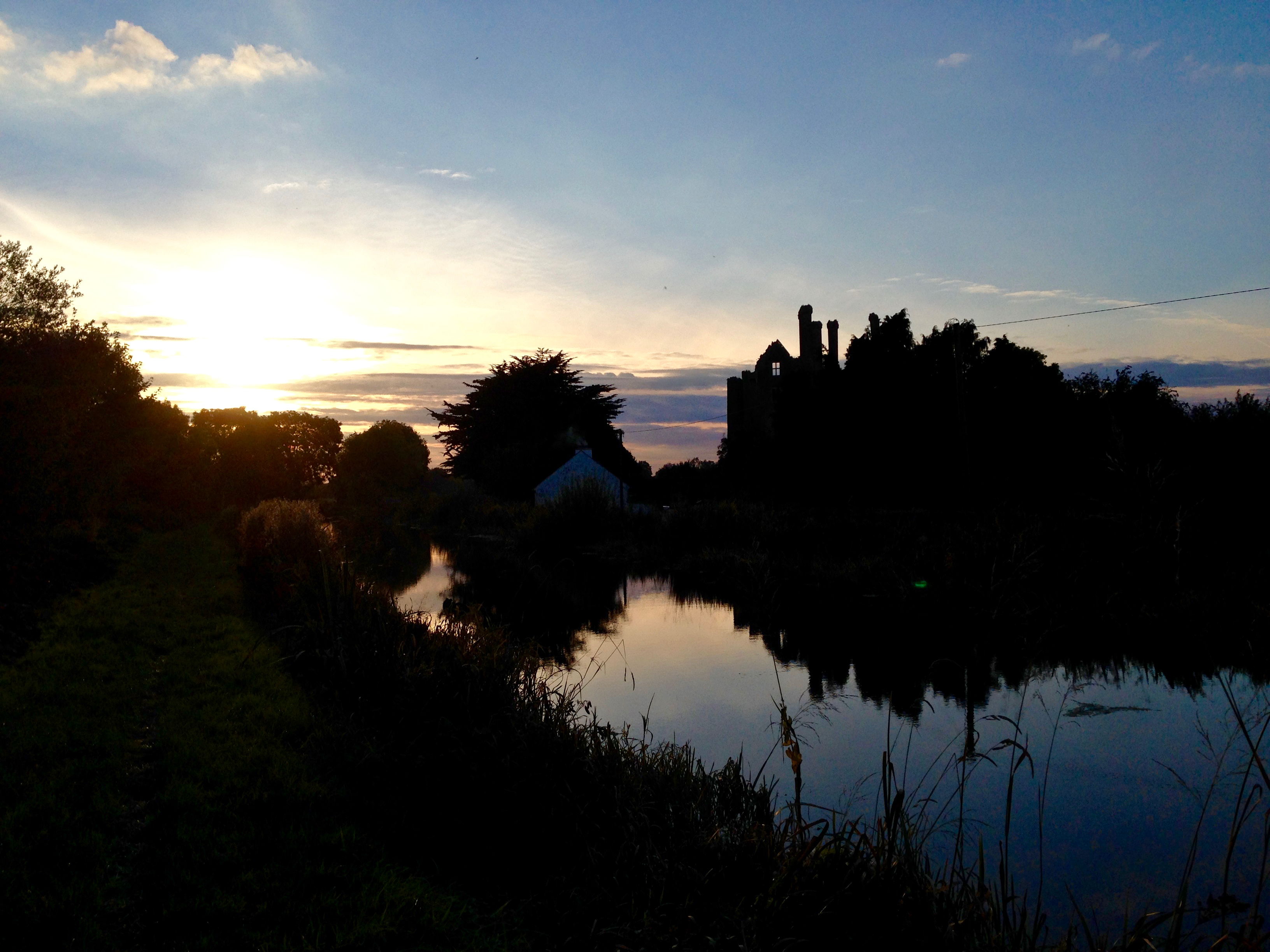
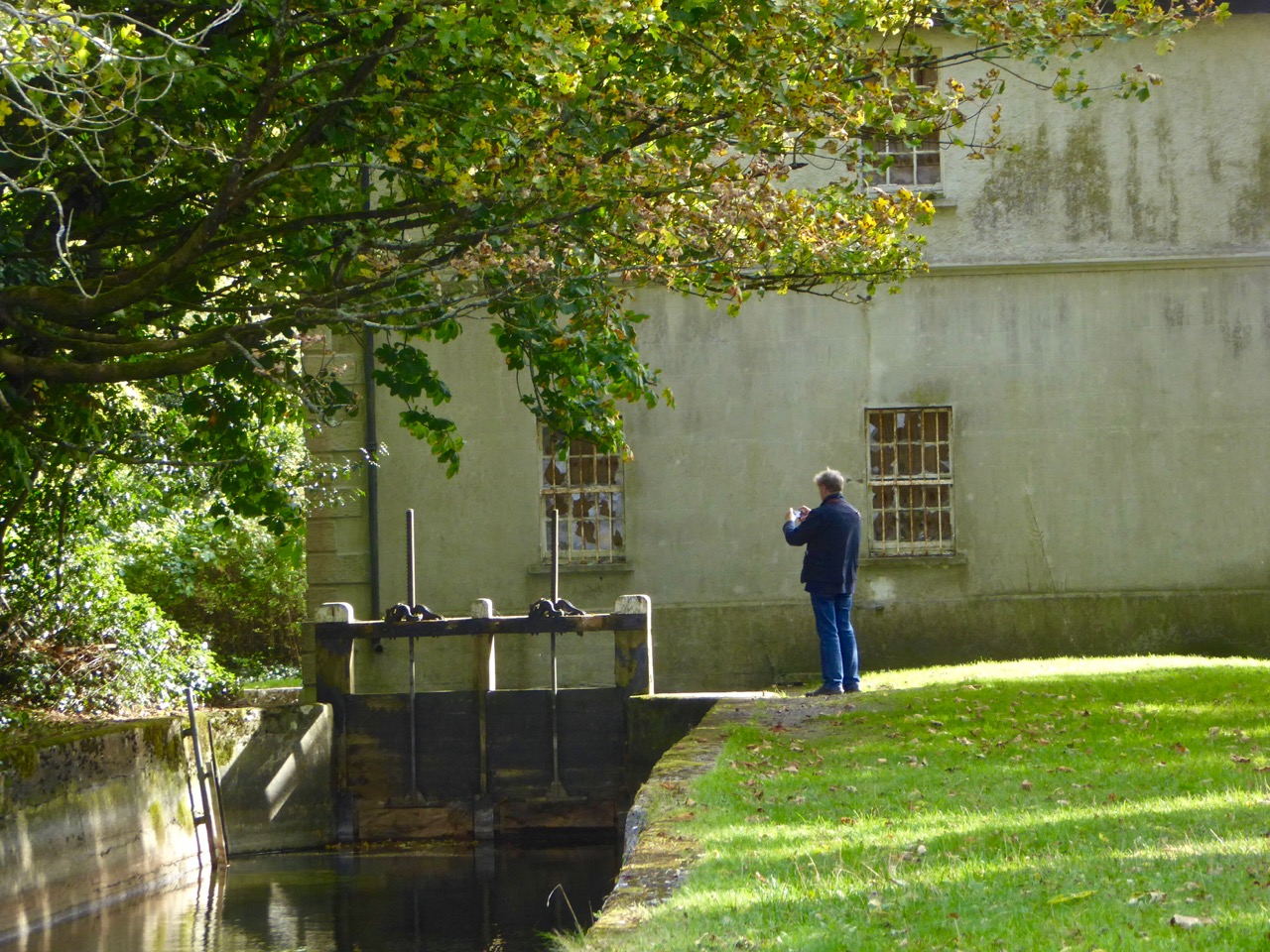


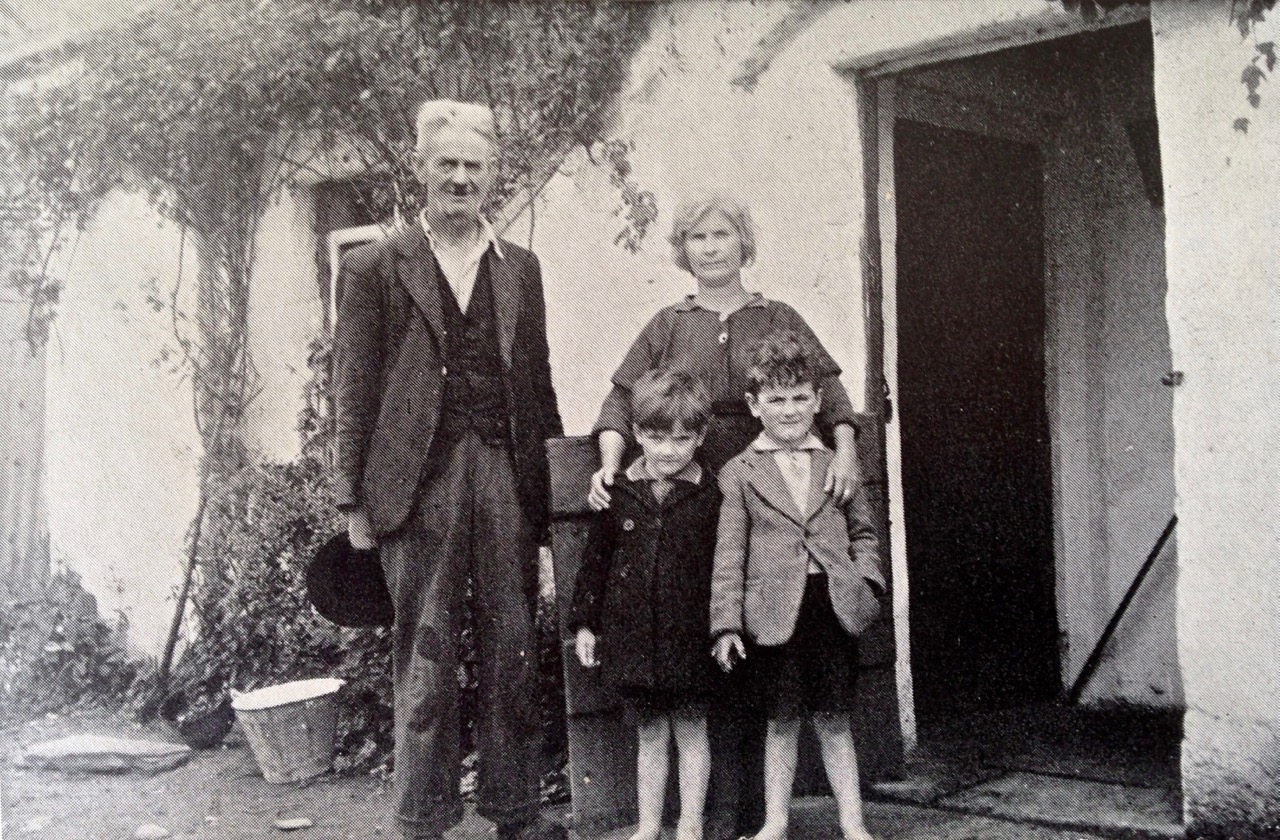
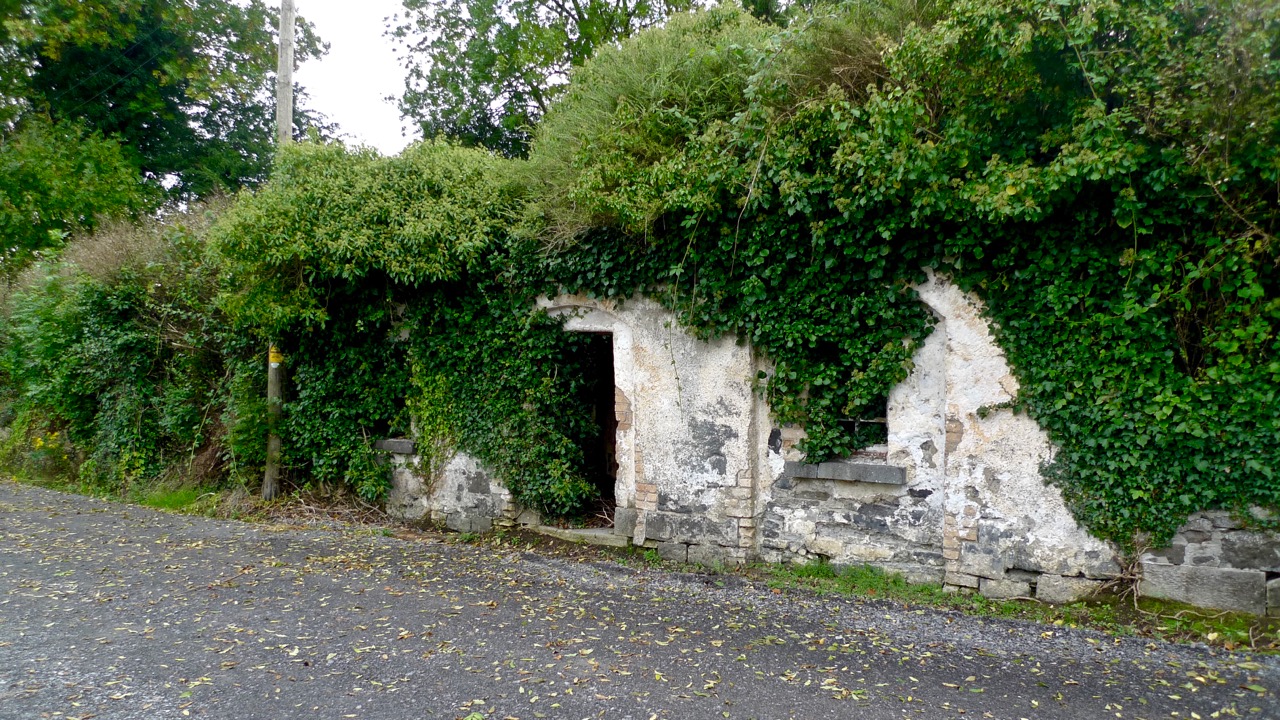

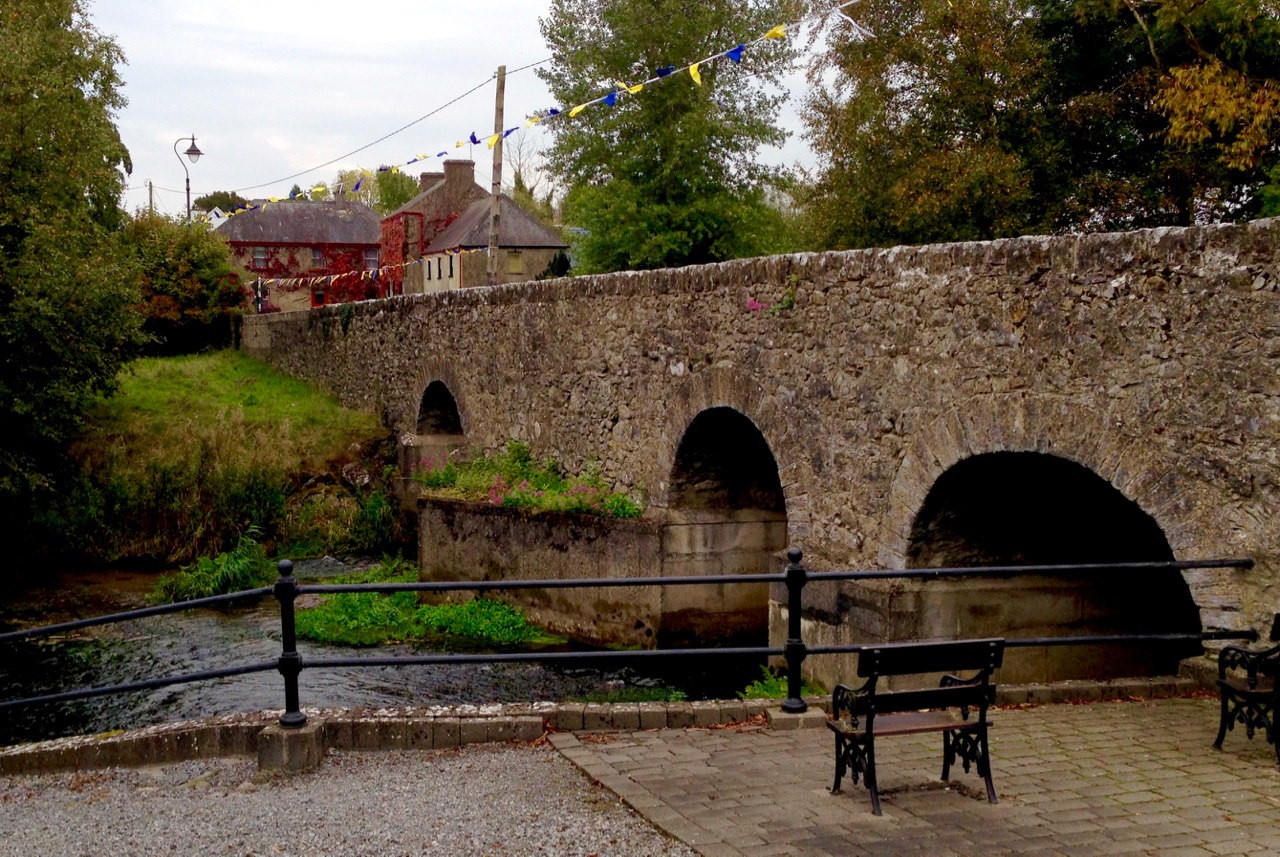
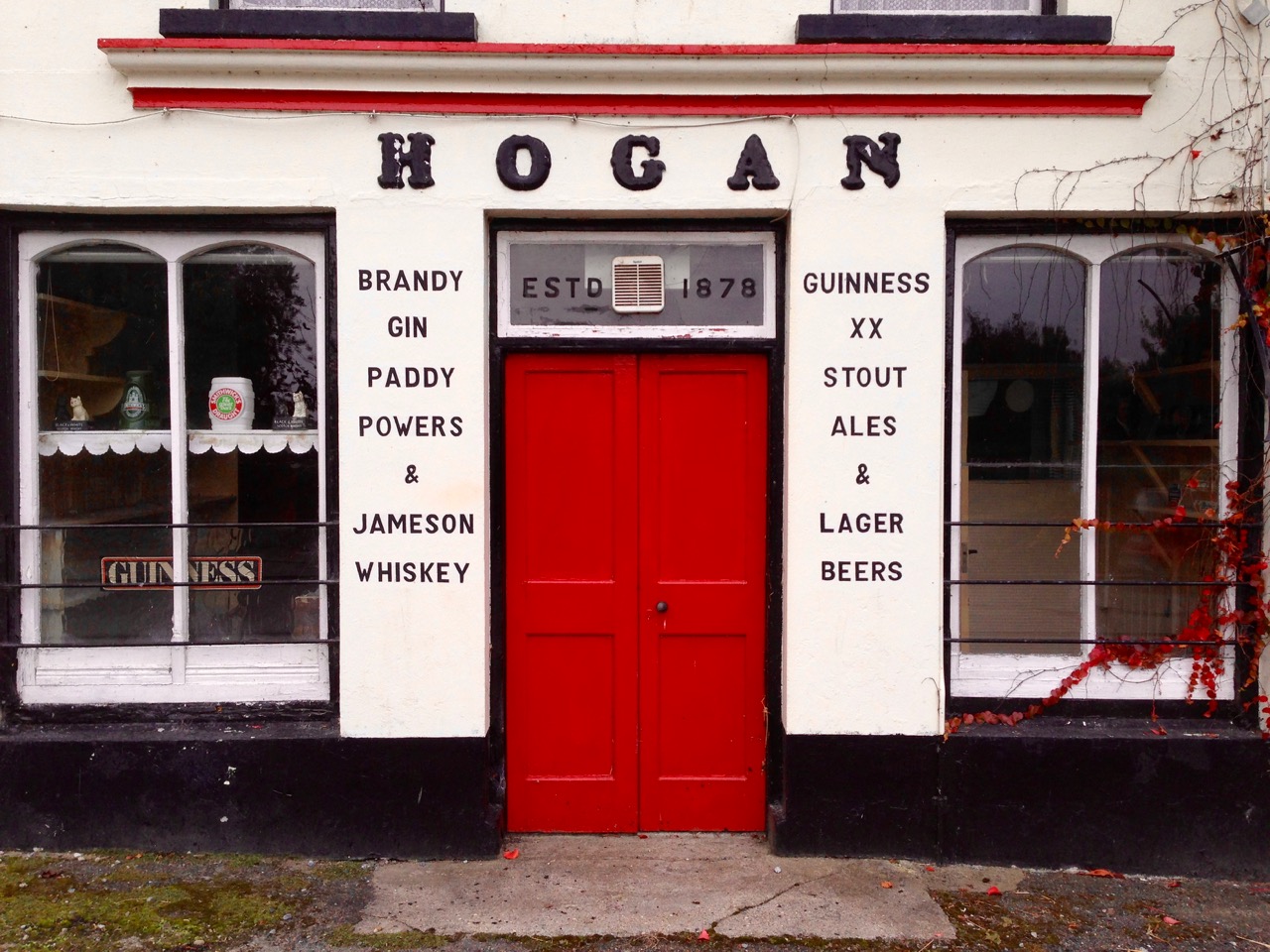




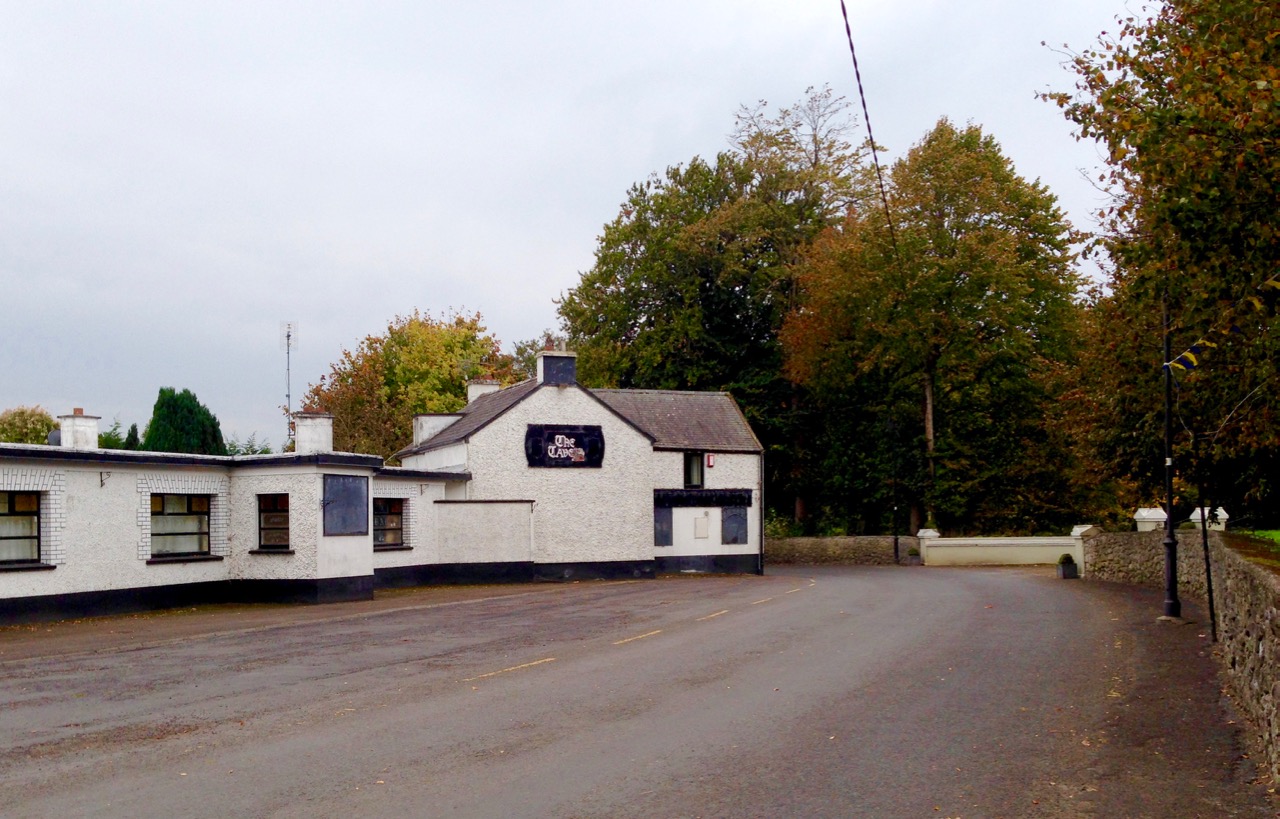
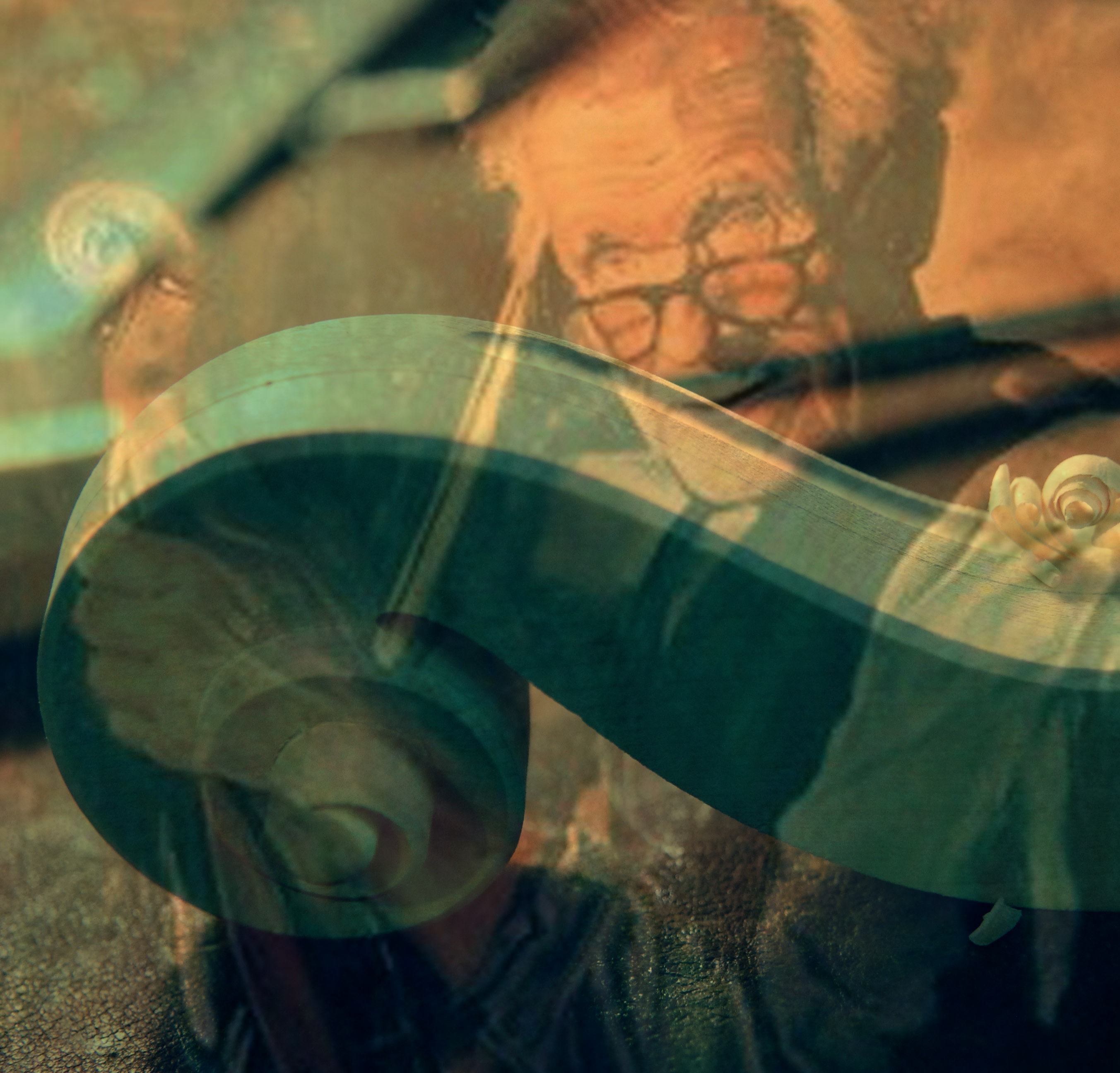
Hello Robert – I bought Dicks house last year!!! I have renamed it – River Song House.
LikeLike
Hi Claire. Sadly, Robert died last month. I know he would have been very excited for you. Finola
LikeLike
Hello, Robert, This is pure serendipity – your journal is a positive delight. Green and Silver occupies a very special place on my bookshelf since I acquired it back in 1968 when we campaigned for the retention of Dublin’s circular line of the Grand Canal – it was in dire danger of being filled in to facilitate a huge drainage plan. Fast forward to my moving to Terryglass in the early 1970s where I had the great good fortune to meet Dick Stanley of Ballinderry. He made me a fiddle which I still have and cherish, it is stamped “ristéard o’’stanlaig, bailean doire, aonac, tiobraidarain, 1969” in the time-honored place inside on the body near the sound peg.
Elsie Hogan’s Bar is delightful, it would good to see it reopen in all its glory. Paddy.
LikeLiked by 1 person
Paddy – that’s wonderful!! You have probably seen how many responses there have been to this post. So great to hear that you have a Dick Stanley fiddle. Do you play traditional music on it? And great work campaigning for the retention of the circular route – takes me back to my own canal rebuilding days ( in my distant youth)…
LikeLike
Indeed, Robert, I share your joy in the Fiddle Makers – Dick Stanley was a saintly craftsman and I feel honoured to have met him. And I don’t play his instrument half enough – I had it restored about 20 years ago by another maestro, Gerry O’Connor from Dundalk with whom I shared a few tunes in halcyon days on Inishbofin. In those days music sessions generally commenced around midnight and were still going strong after dawn! Dick had family connections in Co. Galway, and I remember we used to chat about the pure tradition of the Ballinakill Ceili Band from East Galway – a widely respected group frequently heard on radio. I do hope life returns to Ballinderry in some shape or form again, many villages have suffered as the world hurtles on. Long live your excellent diaries. Paddy
LikeLike
Robert and Finola,
So good to read of your interest in Dick Stanley, I made a reply in the comments box.
Just read your return visit to Clonfert, another delightful discussion on history and the stonemason’s art with beautiful images – t’was my daughter Gwen who flagged me with your journal, she’ll be fascinated with St. Brendan as with previous visits. She has been penning her own exploits on the Shannon, Grand Canal and River Barrow in her wooden canoe she built here at home.
Your quest for the iconic Skeagh Gheal was a joy to read as we crossed the midlands the week before last, the magnificent happy blossom is a week or two later here at 400ft in the Blackstairs foothills. It is still just about holding on while sea level has faded! But t’is such an annual treat from this countryside beauty. Highly commendable planting on the new motorways deserves a mention too, the best stock-proofer hedge of all!
Keep up your great journal. Paddy. Attached Dick’s fiddle, faithfully restored by another gem, one Gerry O’Connor in Dundalk, see invoice! And close up of Knockroe Skeagh.
Paddy Wilkinson pwilk12@gmail.com
>
LikeLike
Hi Rob,
I was interested to read your post about Dick Stanley. I can add some relevant information as I actually lived in Dick Stanley’s house for a time. My wife and I bought what was still known as ‘the Stanley House’ in about 1999 from a charming couple called the O’Donoghues who had bought (or perhaps inherited?) the house from Dick. The house is the white, two storeyed house between the two pubs. I remember that when we moved in there were still some fragments of fiddles in the workshop behind the house. I also remember Elsie Hogan who ran the (sadly now deserted) pub. It was a cracking little boozer where I spent many a happy evening. Work eventually took me back to the UK, but I still think fondly of my years in Ballinderry
LikeLiked by 1 person
That’s excellent to hear from you, Joe. It was a real mystery to us that we couldn’t find anyone at all in the village on the day we visited. My ambition is to find one of Dick’s fiddles – hopefully still in use! We’ll return there sometime, armed with that additional information – many thanks!
LikeLike
Hello Robert,
Hopefully you have read my post to Joe. Although I was born in England I spent nearly all my school summer holidays in Ireland. One year I spent 6 weeks in Ballinderry staying with my Uncle Bill Donoghue and my 3 cousins Frank,Kevin and Tony.
Great times going fishing in the Ballifinboy River by the old Mill -before the ESB ruined it by dredging it out!
The Tavern was both a shop and a great drinking pub. Marty Meara was the landlord and I vividly remember his wife cutting me a huge piece of ice cream from a block and putting it between 2 wafers for the princely sum of thruppence. I would have been around 13 at the time meaning this was probably 1967. My wonderful Grandparents Danny and Pearl Donoghue lived at Gortmore with the farmland running all the way down to the shores of Lough Derg. My Uncle Bill and Uncle Ritchie both had boats at Kilgarvan and took me fishing on the lough. Great times with some fascinating people.
LikeLiked by 1 person
Thank you, Ollie’s Grandad. It’s great to have these memories recorded.
LikeLike
After Dick Stanley( my Great Uncle) died the house was left to my Uncle Bill Donoghue who owned the village garage at ‘The Cross’.
I possess an unfinished violin that Dick made. I vividly remember age 18 visiting him with my late father at 2pm one day on our way to fishing down past the Barracks on the Balifinboy River. He plied us with whiskey and I was certainly very chilled out after the visit. He was also a fantastic water diviner and showed my dad and I how to do it. My Dad was very good at it, but sadly I wasn’t. Dick was a baker by trade and the Ballinderry House was a shop.
Another amazing fact about Dick was that he was sentenced to death in the uprising which, was commuted to a term of imprisonment.
I understand he was friends with Michael Collins and that Collins visited him at Drominagh House where my Grandfather was Gardener . When i visited Dick’s House in the 70’s the shop was still in the front complete with counter and quite a few items of stock still left on the shelves.
LikeLiked by 1 person
Hello again, Ollie’s Grandad! for some reason, the comment you made on Roaringwater Journal, July 24 2019, has only just come ‘alive’ today!! Sometimes there are glitches… But a belated thanks for this – you have certainly helped fill in this puzzle with both your comments. This series of posts is still available online – and still being read, If you had a photo of the unfinished violin I would love to add it in to the post…. Best wishes, Robert.
LikeLike
Thank you Robert. The youngest boy in the old photo is Willie Keenaghan my dad. He passed in July 2002. His older brother Sean died in 1996 if my memory serves me correctly. Both died young and are dearly missed. I had no idea this photo existed. I recently returned to Ireland after many years abroad, mostly Japan. I was delighted to find the Canal in such good repair, so much so I bought bicycles for my Japanese wife, our four children and myself and we took a bike trip ‘home’. I was born in the ‘new house’ next to the cottage in the photo. Our journey was blessed with good weather and it was a wonderful homecoming experience, especially after the hustle and bustle of the Far East.
Willie was a man of few words who worked hard and fathered eleven children with his beloved wife Julia but rarely spoke of his childhood. He did mention they had no shoes in summer and this photo seems to back that up. I remember him telling me ‘a boiled egg was considered a treat’.
Robert, finding this journal was another treat. Thank you once again.
Is mise le meas
Pilip O Caoineachan
Philip Keenaghan
LikeLike
Philip – it’s great to get feedback like this! And the comment from Sarah (below). I think old photographs are such valuable things – especially photos of people. We take it for granted nowadays that photographs – digital records – are so much part of our world. 72 years ago, each photo had to be carefully considered, as film was expensive and developing, printing etc were long-winded processes. Angela Rolt has left us with great insights into the past – and the story is continuing…! Best wishes, Robert
LikeLike
Hi Robert,
I am the daughter-in-law of the smallest boy in the picture (with Jack Keenaghan). We were delighted when one of the family came across your article and as far as I know the photograph taken by the Rolts (which was duly received because we still have it) is the only known photograph of Jack and his wife Catherine. This lady was in fact his second wife, his first had sadly died. What a lovely story for us to have, the generosity of the gesture and the kindness of the Rolts to send on the picture is like having a window to the past. Thanks for sharing this and the story of your journey.
Best regards
Sarah Keenaghan
LikeLiked by 1 person
Sarah – that’s wonderful! It means a lot to me to get that response to my story of two years ago. As you say – a window on the world… I used to know Tom Rolt, and was very involved in canal restoration work in the UK in my younger days. Having now explored the canals of Ireland, I think they are, in themselves, a delightful secret world – with so much history. Best wishes – Robert
LikeLike
Well done sister in law James Keenaghan Brooklyn New York
LikeLiked by 1 person
Yes Robert, I hope you haven’t given up hope on Dick Stanley. Sad to see that village without either shop or pub. Great work on the latter day scene at Draper’s Bridge. The canal is busier now but with no one left to hand out the potatoes.
LikeLiked by 1 person
I’ll carry on looking for him, Roy. There are still friendly and hospitable people living in a few of the lock cottages: some of them come from families who worked on the canals for generations!
LikeLiked by 1 person
This is a great series Robert! I treasure my edition of Rolt’s book and his other ones on the British canal system and Victorian engineering. And I treasure my copy of your own book, which I managed to get on Amazon a while back. Perhaps at some stage you might consider assembling your articles into book form? They show beautifully what we have lost and, to an extent, what we have gained since the Rolt’s paid their visit to post-war Ireland and described us so accurately and sensitively.
LikeLiked by 1 person
Thank you, John. I am really enjoying pursuing the Irish canals and following the Rolts! The articles may go further…
LikeLike
I love the photo of the lock keeper and his family but how sad to see their old cottage in such a ruinous state. Ballinderry was obviously chocabloc with ghosts!! I’d like a little look in the old shop!
LikeLiked by 1 person
We have to go back! I’m quite sure that there is some memory of Dick Stanley in the area.
LikeLike
Beautiful photos adn the 1946 reproduction
LikeLiked by 1 person
Thank you, Pat. I must say I’m really enjoying penning this series.
LikeLike